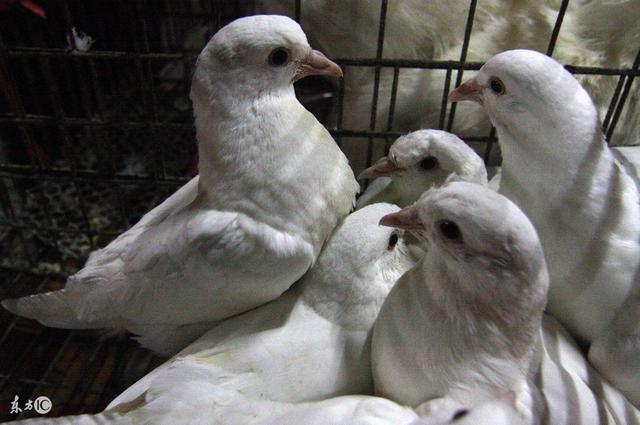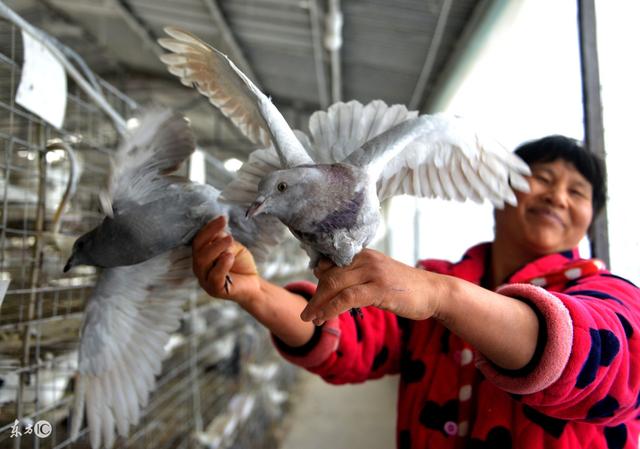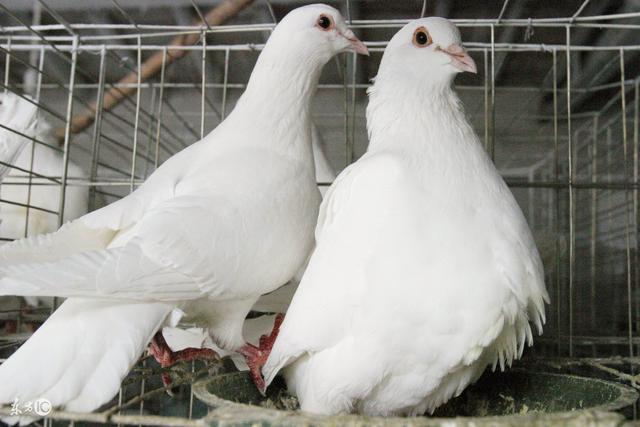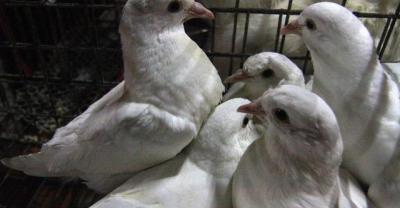How can meat pigeons hatch naturally?
After the pigeons are paired, they then breed, and the female pigeons crouch in the nest basin for a long time. When the second egg is laid, the parent pigeon begins to hatch. In the process of holding eggs of parent pigeons, the following management work should be paid attention to and carried out:

Keep the environment quiet, avoid external interference and stress factors, and give pigeon cages proper shading if necessary to promote parent pigeons to concentrate on hatching their eggs.
2, the nest cushion material had better be double-layer old linen cloth, linen underlying grain husk or sawdust or dry fine sand, the dry fine sand is more ideal, and the thickness in the nest basin is 2-3 cm. The breeder should check the situation of laying and hatching eggs every day, and pick it up in time once the damage is found.
3. Improve the feed nutrition level during the egg holding period, ensure that the crude protein content reaches 18-20%, and the energy level is also increased accordingly. So that the parent pigeon has a strong physique, laying a good foundation for feeding squab. It is necessary to prevent the eggshell station from polluting the feces, as germs may invade the eggs and cause the embryo to die. If the feces have been stained, they can be cleaned with gauze.

4. Taking care of the eggs is a necessary work. The eggs were illuminated once on the 5th day and 10th day of incubation. When the egg is illuminated for the first time, it is found that there are reddish-brown, spider-web-like blood vessels in the egg, and the fertilized egg is stable in shape, and let it continue to hatch. if there is a thick line of blood vessels in the egg, it is a "U" shape, then it is a dead sperm egg; if it is transparent and without blood vessels, it is an azoospermic egg, and the dead spermed egg and the sperless egg should be picked up. The egg was illuminated for the second time on the 10th day of hatching. if it was found that most of the area of the egg was black, and a bright blank area was formed at the other end due to the enlargement of the air chamber, it indicated that the embryo was developing healthily; if there was no clear distinction between black and white in the egg and the material in the egg was unstable, there was a sense of fluctuation when turning the egg, and the eggshell was gray, that is, it was a dead egg and should be eliminated in time.
5. Do a good job of merging eggs in time, because merging eggs is one of the effective measures to improve the fecundity of meat pigeons. After taking out the azygote eggs, dead sperm eggs and dead embryo eggs, merge them into a litter according to each litter, and put the remaining eggs into other nests with the same or 1 day difference in incubation period. It would be better to nest after 10 days. If the pigeons were nestled together 10 days ago, the pigeons in the empty nests could lay eggs in about 8 days. Early laying would affect the recovery of pigeons' physical strength. The next litter may not have strong vitality, or there may be no sperm eggs, dead sperm eggs, dead embryo eggs, and so on.

6. It is very important to know the date of coming out of the shell. When shining for the second time 7-8 days after the egg, pay attention to observe the shell condition of squab. If it is really difficult to get out of the shell, manual help is needed. Generally hatching has reached 18 days, the shell surface only pecked through a small hole, the need for manual assistance shelling. The incubation period has been more than 18 days, and the embryo may have died without pecking at the shell.
7. The hatching temperature of pigeons is very important and should be kept at a suitable temperature. In winter, the temperature in the room should be kept above 5 ℃ at least. If the temperature is too low, it should be heated in the room, otherwise it is easy to freeze to death in the early stage of hatching. In the hot summer, it is necessary to reduce the bedding properly, open the doors and windows, turn on the exhaust fan, and keep the room temperature below 32 ℃, otherwise it is easy to cause stillbirth in the later stage of incubation.
- Prev

Farmers raise "black goats" ecologically, earning more than one million yuan a year!
Recently, the black goat farming in Yuxi has entered the full fruit period, and the price has dropped somewhat. But in Eshan county Yongsheng black goat farm, breed Wang Yunhui, a big farmer.
- Next

What on earth should we pay attention to in raising hares?
Temperature: the sweat gland of the hare is extremely underdeveloped, and there is a dense coat on the body surface, so it is sensitive to the temperature of the situation. According to the experiment, the optimum temperature of young hare is 3035.
Related
- On the eggshell is a badge full of pride. British Poultry Egg Market and Consumer observation
- British study: 72% of Britons are willing to buy native eggs raised by insects
- Guidelines for friendly egg production revised the increase of space in chicken sheds can not be forced to change feathers and lay eggs.
- Risk of delay in customs clearance Australia suspends lobster exports to China
- Pig semen-the Vector of virus Transmission (4)
- Pig semen-the Vector of virus Transmission (3)
- Five common causes of difficult control of classical swine fever in clinic and their countermeasures
- Foot-and-mouth disease is the most effective way to prevent it!
- PED is the number one killer of piglets and has to be guarded against in autumn and winter.
- What is "yellow fat pig"? Have you ever heard the pig collector talk about "yellow fat pig"?

